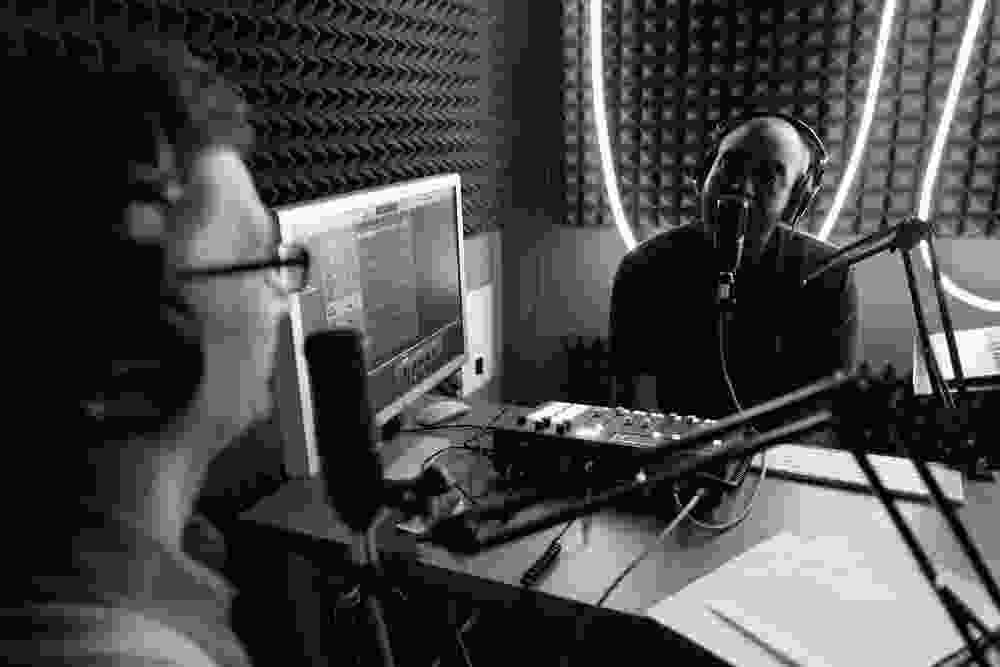Best way to publish an audio and video podcast at the same time
Distribute your audio podcast to Apple Podcasts and your video podcast to YouTube and Spotify

Justin Jackson
Increasingly, podcasters want to produce both a video and audio version of their show. This allows their audience to listen on the go in their favorite listening app or watch the video version on their TV at home.
After lots of experimentation, I've found what I believe is the best way to do an audio and video podcast simultaneously:
Use a podcast hosting platform for the audio version (and submit to Spotify, Apple, etc)
Upload the video version to YouTube and add it to a Podcast Playlist.
The best way to publish a video and audio podcast simultaneously
Here are the current steps Jeremy and I use on our podcast (which has a video version and an audio version):
Record audio and video in Squadcast, Riverside, or Zoom
Edit the audio and video versions of the episode in Descript, ScreenFlow, Adobe Premier
For the audio version:
Export your audio as an MP3 file
Upload the MP3 file to your podcast hosting platform
Add an episode thumbnail and description
Include a link to the YouTube video version (if applicable)
Publish the episode (this will be distributed to Spotify, Apple Podcasts, Amazon Music, Pocket Casts, etc.)
For the video version:
Export your video as an MP4 or MOV file
Upload the video to YouTube
Create a podcast playlist on YouTube:
Go to YouTube Studio
Click "Create" and choose "New Podcast"
Add your podcast videos to this playlist
Optional: you can replace the audio version of your episode with video on Spotify
Link to both audio and video versions on the podcast website
Track your podcast performance:
Use YouTube analytics for video performance
Use your podcast hosting platform's analytics for audio performance across various podcast apps
Benefits of doing both an audio and video podcast
Increased distribution: By submitting your podcast to multiple platforms, you increase the chances of discovery.
Flexibility for listeners: People can choose their preferred method of consuming your content (audio or video, favorite platform).
Automatic updates: Once you've submitted your podcast to audio platforms, new episodes will automatically appear without resubmission.
Comprehensive analytics: Track both audio and video performance separately.
Before you start: a few things to know about video podcasts
YouTube is one of the biggest content discovery engines on the internet. Having a video podcast could introduce your podcast to a bigger audience. However, there are some caveats:
A video podcast is more expensive to produce
The beauty of an audio podcast is that you only need a microphone ($60) and a device (phone, iPad, computer) to record your audio and upload it to a podcast hosting platform.
But to create a video podcast, most folks buy a DSLR camera (~$800), a camera lens (~$500), a key light (~$300), a teleprompter (~$300), a capture card (~$100), plus a beefy computer that can handle editing large video files (~$1,500). Even just a basic setup can cost $3,500.
A video podcast takes longer to edit
When I asked Chris Enns, podcast editor, how much time it takes to edit a video podcast, he said:
There are many of factors (scene switching, overlays, titles, b-roll), but editing a video podcast takes roughly 2-3x more time than an audio podcast.
Additional resources
For more detailed information on equipment, recording techniques, and publishing processes, check out the comprehensive guide at transistor.fm/start.
By following this approach, you can effectively create and distribute both audio and video versions of your podcast, maximizing your reach and giving your audience the flexibility to consume your content in their preferred format.
